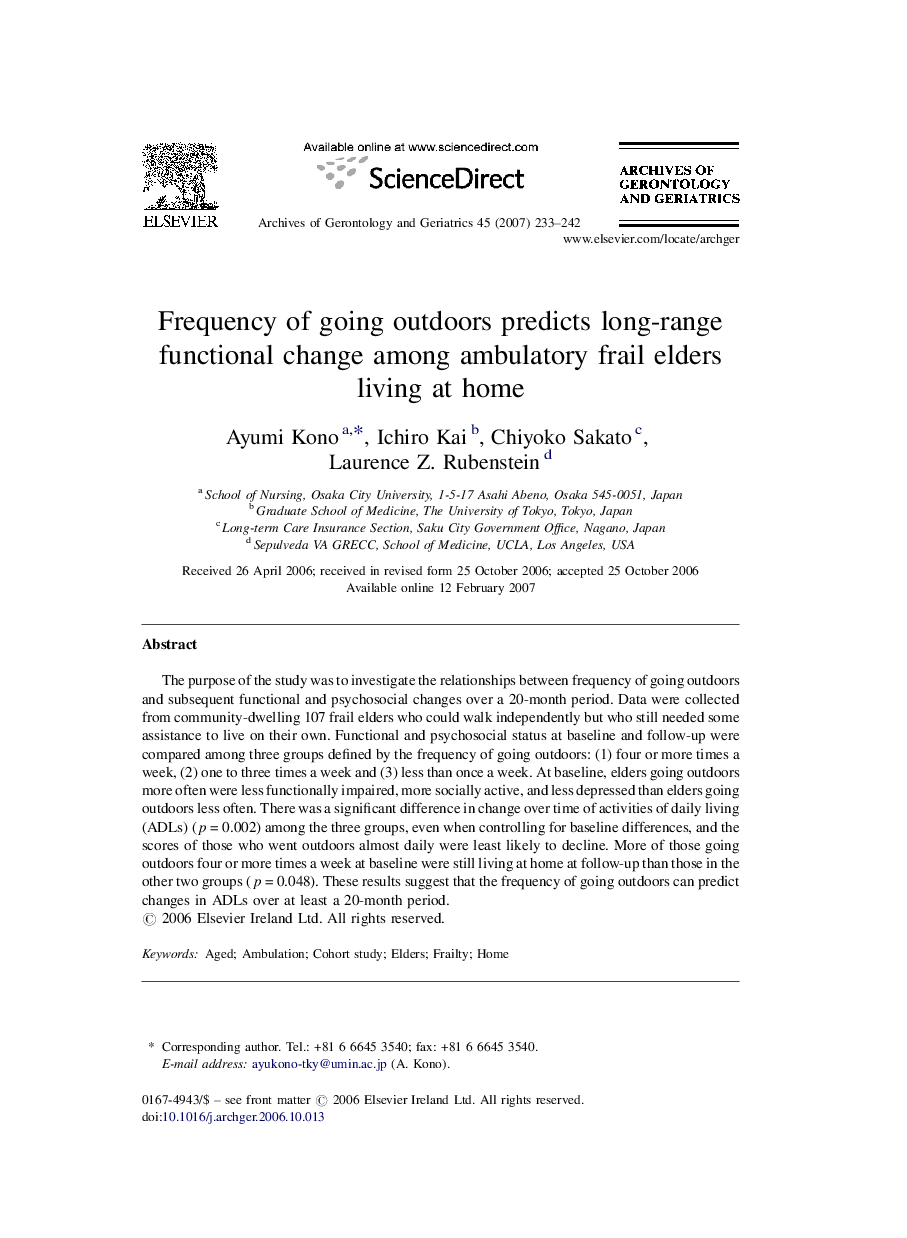| Article ID | Journal | Published Year | Pages | File Type |
|---|---|---|---|---|
| 1904319 | Archives of Gerontology and Geriatrics | 2007 | 10 Pages |
The purpose of the study was to investigate the relationships between frequency of going outdoors and subsequent functional and psychosocial changes over a 20-month period. Data were collected from community-dwelling 107 frail elders who could walk independently but who still needed some assistance to live on their own. Functional and psychosocial status at baseline and follow-up were compared among three groups defined by the frequency of going outdoors: (1) four or more times a week, (2) one to three times a week and (3) less than once a week. At baseline, elders going outdoors more often were less functionally impaired, more socially active, and less depressed than elders going outdoors less often. There was a significant difference in change over time of activities of daily living (ADLs) (p = 0.002) among the three groups, even when controlling for baseline differences, and the scores of those who went outdoors almost daily were least likely to decline. More of those going outdoors four or more times a week at baseline were still living at home at follow-up than those in the other two groups (p = 0.048). These results suggest that the frequency of going outdoors can predict changes in ADLs over at least a 20-month period.
